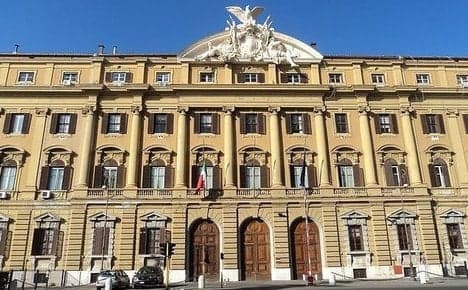Italy's economy grows slower than EU average

The Italian economy grew by 0.2 percent in the second quarter of 2015, lower than the EU average, according to figures released by the national statistics agency, Istat.
The 0.2 percent increase in GDP between April and June matches the 0.2 percent increase Italy recorded for January – March 2015.
Seasonally adjusted primary estimates from Istat show that GDP was 0.5 percent higher than during the second quarter of last year.
The figures were more positive news for Italy's economy, which is finally seeing positive growth after a lengthy triple-dip recession. But growth in Italy is still lagging behind the EU average, which was recorded at 0.4 percent for the same quarter.
Italy's Ministry of Economy and Finance told Corriere Della Sera that the results had been “as expected” but that there is still plenty of work to be done.
“The country must do more in terms of political, structural and economic reforms to favour growth,” the ministry said.
Germany's economy, Europe's biggest, grew by 0.4 percent.
Raj Badiani, senior economist at IHS Global Insight, said the outlook for Italy remained precarious with low energy prices, the weak euro and loose monetary policy in the eurozone having provided a temporary boost which would not necessarily be sustained.
"The economy staggered out of yet another recession in the latter stages of 2014, while the anticipated resumption of growth in the first half of 2015 was disappointing given it was the first gain since mid-2011, and was a lacklustre return from extremely supportive external factors," Badiani said in a note.
Unemployment at over 12 percent of the labour force continues to dampen a consumer-led recovery in Italy and many observers see the country's longer term prospects as being blighted by an array of structural factors, ranging from relatively high labour costs to stifling bureaucracy and corruption which act as barriers to inward investment.
Comments
See Also
The 0.2 percent increase in GDP between April and June matches the 0.2 percent increase Italy recorded for January – March 2015.
Seasonally adjusted primary estimates from Istat show that GDP was 0.5 percent higher than during the second quarter of last year.
The figures were more positive news for Italy's economy, which is finally seeing positive growth after a lengthy triple-dip recession. But growth in Italy is still lagging behind the EU average, which was recorded at 0.4 percent for the same quarter.
Italy's Ministry of Economy and Finance told Corriere Della Sera that the results had been “as expected” but that there is still plenty of work to be done.
“The country must do more in terms of political, structural and economic reforms to favour growth,” the ministry said.
Germany's economy, Europe's biggest, grew by 0.4 percent.
Raj Badiani, senior economist at IHS Global Insight, said the outlook for Italy remained precarious with low energy prices, the weak euro and loose monetary policy in the eurozone having provided a temporary boost which would not necessarily be sustained.
"The economy staggered out of yet another recession in the latter stages of 2014, while the anticipated resumption of growth in the first half of 2015 was disappointing given it was the first gain since mid-2011, and was a lacklustre return from extremely supportive external factors," Badiani said in a note.
Unemployment at over 12 percent of the labour force continues to dampen a consumer-led recovery in Italy and many observers see the country's longer term prospects as being blighted by an array of structural factors, ranging from relatively high labour costs to stifling bureaucracy and corruption which act as barriers to inward investment.
Join the conversation in our comments section below. Share your own views and experience and if you have a question or suggestion for our journalists then email us at [email protected].
Please keep comments civil, constructive and on topic – and make sure to read our terms of use before getting involved.
Please log in here to leave a comment.